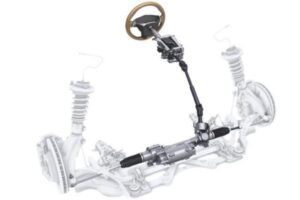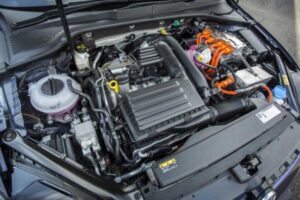Introduction to Air Suspension: Technology and Applications
The automotive industry is constantly evolving, with manufacturers continually exploring innovative ways to enhance vehicle performance, safety, and comfort. One such advancement that has gained significant traction is air suspension. This cutting-edge technology replaces traditional coil spring suspensions with air-filled rubber bags or bellows. In this article, we will delve into the various aspects of air suspension, including its functioning, benefits, challenges, and future prospects.
Advantages and Challenges of Air Suspension in Vehicles
Air suspension brings a plethora of advantages to the table, making it an enticing choice for vehicle manufacturers and consumers alike. Some of the key advantages include:
- Ride Quality and Comfort: Air suspension provides a smoother and more comfortable ride by absorbing road irregularities effectively. It offers adjustable damping, allowing drivers to customize their ride preferences.
- Load Leveling: Vehicles equipped with air suspension can automatically adjust their ride height based on the weight they carry, ensuring a level and stable ride even with heavy loads.
- Improved Handling and Stability: Air suspension enhances vehicle stability and reduces body roll during cornering, resulting in improved handling and enhanced safety.
- Variable Ground Clearance: Drivers can adjust the ground clearance of their vehicles, making it convenient to navigate challenging terrains or steep ramps.
- Reduced Wear and Tear: Air suspension reduces mechanical stress on various components, leading to reduced wear and tear, ultimately extending the vehicle’s lifespan.
Despite its numerous advantages, air suspension also faces some challenges:
- Cost: Air suspension systems are generally more expensive to manufacture and install compared to conventional suspensions, adding to the overall cost of the vehicle.
- Complexity: The advanced technology of air suspension requires complex electronic control systems, which can increase maintenance complexity and repair costs.
- Potential Air Leaks: Air suspensions are susceptible to air leaks, which can lead to performance issues and require prompt troubleshooting.
The Internal Working of Air Suspension: A Detailed Look
To comprehend the functioning of air suspension, it’s essential to understand its core components and mechanisms. The primary elements of an air suspension system are:
- Air Springs: These rubber bags or bellows are responsible for supporting the vehicle’s weight and absorbing shocks.
- Air Compressor: The air compressor pressurizes the air and delivers it to the air springs when needed.
- Air Reservoir: An air reservoir stores compressed air, ensuring an immediate supply of air when required.
- Electronic Control Unit (ECU): The ECU manages the air suspension system, processing data from various sensors and adjusting the air pressure accordingly.
The air suspension system continuously monitors various parameters, including vehicle speed, load distribution, and road conditions, to optimize ride quality and safety.
Evolution of Air Suspension in the Automotive Industry
The concept of air suspension dates back to the early 20th century when it was first utilized in luxury vehicles. Over the decades, advancements in technology and manufacturing processes have made air suspension more accessible and adaptable to a wide range of vehicles. From luxury sedans to commercial trucks and SUVs, air suspension is now found in various automotive applications.
Initially, air suspension was primarily used in commercial vehicles and heavy-duty trucks to improve load-carrying capacity and ensure a smoother ride. However, its advantages soon caught the attention of luxury car manufacturers, who integrated air suspension to provide a more luxurious and comfortable driving experience.
As technology progressed, electronic control systems allowed for real-time adjustments of the air pressure in individual air springs, enabling further customization of the ride and handling characteristics. Today, many high-end luxury vehicles and high-performance sports cars come equipped with advanced air suspension systems.
Impact of Air Suspension on Driving and Driver Comfort
The implementation of air suspension in vehicles has had a significant impact on driving dynamics and driver comfort. With the ability to adjust the ride height and damping characteristics on the fly, air suspension offers a dynamic driving experience that caters to various conditions and driving styles.
For daily commuting and long journeys, the comfort-oriented setting provides a smooth and plush ride, reducing driver fatigue and enhancing passenger comfort. On the other hand, engaging a sportier setting enhances handling and responsiveness, appealing to drivers seeking a more spirited driving experience.
Furthermore, air suspension greatly benefits off-road driving. The ability to raise the vehicle’s ground clearance allows it to conquer rough terrains and obstacles with ease, making it a popular choice for SUVs and off-road enthusiasts.
Electronic Control Systems in Air Suspension: Enhancing Efficiency
Modern air suspension systems are equipped with advanced electronic control units that play a crucial role in optimizing performance and efficiency. These systems use various sensors, such as height sensors, acceleration sensors, and pressure sensors, to gather data about the vehicle’s motion, load distribution, and road conditions.
The electronic control unit processes this data in real-time and adjusts the air pressure in each air spring accordingly. This ensures that the vehicle maintains the desired ride height and adapts to changing conditions, providing the best possible driving experience.
Additionally, some air suspension systems offer adaptive damping control, allowing the vehicle to adjust the firmness of the suspension based on driving conditions and driver inputs. This level of adaptability enhances both comfort and handling, making air suspension an attractive option for a diverse range of drivers.
Air Suspension for Commercial Vehicles: Benefits and Considerations
Air suspension’s advantages are not limited to passenger vehicles; they extend to commercial vehicles as well. Trucks, buses, and trailers equipped with air suspension benefit from increased load-carrying capacity and improved stability. These advantages are especially critical in the transportation of delicate or hazardous cargo, where a smooth and stable ride is essential.
The load-leveling capability of air suspension ensures that the vehicle remains level even when carrying varying loads, reducing the risk of imbalanced weight distribution and optimizing fuel efficiency. Additionally, air suspension reduces vibrations and shocks transmitted to the cargo, minimizing the likelihood of damage during transit.
However, commercial vehicle operators should be aware of the potential challenges associated with air suspension, such as higher maintenance costs and downtime due to air leaks or electronic control system issues. Proper maintenance and regular inspections are essential to ensure the reliable performance of air suspension in commercial applications.
Safety and Maintenance of Air Suspension: Essential Guidelines
Ensuring the safety and longevity of air suspension systems requires adherence to specific guidelines and maintenance practices. Here are some essential tips for maintaining air suspension:
- Regular Inspections: Routinely inspect air springs, air lines, and fittings for signs of wear, damage, or leaks. Address any issues promptly to prevent further damage.
- Keep Air Compressor Clean: Regularly clean and maintain the air compressor to ensure it operates efficiently. A clean compressor is less likely to experience failures or reduced performance.
- Check Air Reservoir: Monitor the air reservoir for proper air pressure and ensure it is free from moisture, debris, or contaminants.
- Software Updates: Stay up-to-date with software updates for the electronic control unit. Manufacturers may release updates to improve system performance and address potential issues.
- Temperature Considerations: Be mindful of extreme temperature conditions, as they can impact air suspension performance. Adjust the air pressure accordingly in cold or hot weather.
By following these guidelines, vehicle owners can maximize the lifespan of their air suspension systems and maintain optimal performance and safety.
The Contribution of Air Suspension to Emission Reduction and Fuel Efficiency
In the face of growing environmental concerns and stringent emission regulations, vehicle manufacturers are seeking ways to reduce their carbon footprint and improve fuel efficiency. Air suspension plays a role in achieving these goals by optimizing vehicle aerodynamics and reducing drag.
When operating at highway speeds, some advanced air suspension systems can lower the vehicle’s ride height to minimize air resistance, resulting in improved fuel economy. By reducing drag, vehicles equipped with air suspension consume less fuel, which contributes to lower greenhouse gas emissions.
Moreover, the load-leveling capability of air suspension ensures that vehicles maintain their optimal aerodynamic profile, regardless of the load they carry. This consistency in aerodynamics further enhances fuel efficiency and emission reduction.
Future Perspectives of Air Suspension: Innovations and Trends
As technology continues to evolve, the future of air suspension holds exciting prospects. Manufacturers are constantly exploring ways to address current challenges and improve the technology’s overall performance.
Some emerging trends in air suspension technology include:
- Sustainable Materials: Manufacturers are researching sustainable and lightweight materials for air spring construction, reducing environmental impact and enhancing fuel efficiency.
- Integration with Autonomous Driving: Air suspension systems can play a significant role in autonomous driving scenarios, where dynamic ride adjustments are crucial for passenger comfort and safety.
- Smart Air Suspension: Future systems may integrate artificial intelligence and machine learning algorithms to analyze real-time data and make precise adjustments, further enhancing ride quality and performance.
- Wireless Connectivity: Wireless sensors and communication technology may become more prevalent, enabling seamless data exchange between components and improving system reliability.
Conclusion:
In conclusion, air suspension is a revolutionary technology that has reshaped the automotive industry by providing enhanced ride quality, improved handling, and superior comfort. From luxury sedans to commercial trucks, the versatility and benefits of air suspension are undeniable.
While challenges such as cost and maintenance complexity exist, continuous innovation and improvements will likely mitigate these issues in the future. As environmental concerns persist, air suspension’s contribution to emission reduction and fuel efficiency remains a key aspect of its significance in the automotive landscape.
The journey of air suspension technology has been one of constant advancement, and with emerging trends and innovations on the horizon, its potential for further revolutionizing the driving experience remains promising. As manufacturers continue to invest in research and development, the future holds exciting possibilities for air suspension in a world of ever-evolving mobility.



